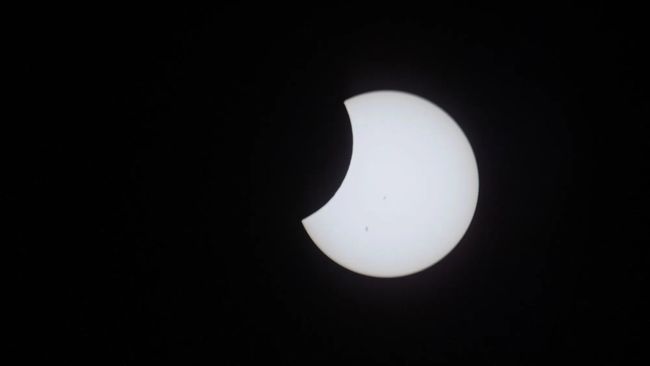Fire in the sky
Not all observers enjoying last weekend’s solar eclipse were limited to Planet Earth.
On October 14, observers in a narrow band off the Oregon coast, stretching southeast through Central and South America, were able to see an annular solar eclipse: the Moon blocked the entire solar disk, leaving only a narrow strip around the edge that sparkled like a bright “ring of fire.”

NASA astronaut captured a solar eclipse from the ISS
However, many more people have seen a partial eclipse, when the Moon seemed to “take a bite out of the Sun.” These observers included the ISS crew, and one person took a photo from this unique vantage point.
The photographer was NASA astronaut, Expedition 70 engineer Jasmine Moghbeli, who arrived at the ISS at the end of August as part of the SpaceX Crew-7 crew mission. The picture was published on social network X by NASA’s Marshall Space Center on October 17.
Annular solar eclipses occur due to the Moon’s slightly elliptical orbit. They occur when the Moon, Sun, and Earth line up in an ideal line, but at a time when the Moon is at its farthest point from our planet and cannot completely hide the solar disk from the observer.
The next total solar eclipse will take place on April 8, 2024, and will be visible in Mexico, the United States, and Canada.




